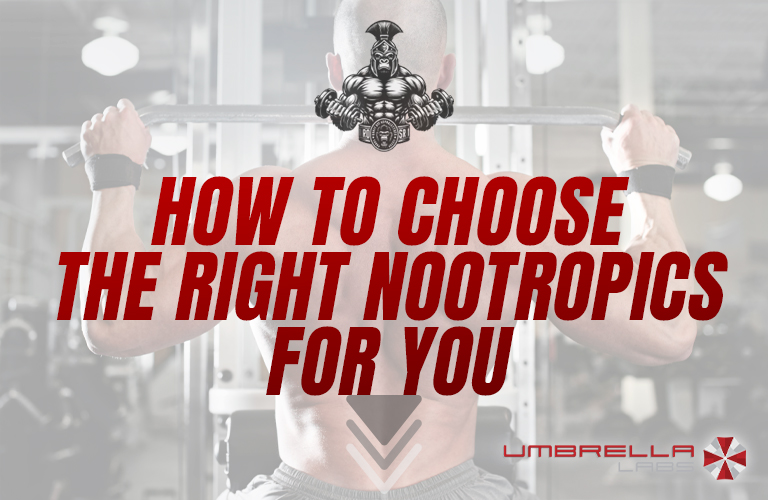
Choosing the right nootropics can be a transformative step towards enhancing cognitive function, mental clarity, and overall brain health. However, with the vast array of options available, it can be challenging to know where to start. The key to selecting the right nootropics lies in understanding your specific cognitive goals, the mechanisms of action of different nootropic classes, and how these substances can work synergistically to meet your needs. Here’s a guide to help you navigate the process.
Identify Your Cognitive Goals
The first step in choosing the right nootropics is to clearly define what you want to achieve. Are you looking to enhancememory and learning, improve focus and attention, reduce anxiety, or protect your brain from cognitive decline? Different nootropics target different aspects of cognitive function, so identifying your primary goals will help narrow down your options.
-Memory and Learning: If your primary goal is to improve memory retention and learning capacity, you might consider Racetams and Cholinergics, which enhance neurotransmitter activity crucial for memory formation.
-Focus and Attention: For improved focus and sustained attention, Stimulants and Ampakines are effective, as they increase neurotransmitter levels associated with alertness and concentration.
-Stress and Anxiety Reduction: If you’re dealing with high levels of stress or anxiety that affect your cognitive performance, Adaptogens and certain Herbal Nootropics can help balance stress hormones and promote mental resilience.
-Long-term Brain Health: For neuroprotection and longterm cognitive health, Peptides, Antioxidant-rich Herbal Nootropics, andVitamins and Minerals offer significant benefits by protecting neurons from oxidative stress and promoting neurogenesis.
Understand Nootropic Classes and Mechanisms of Action
As explained earlier in this book, each class of nootropics works through different mechanisms, affecting various aspects of brain function. Understanding how these classes work will help you select nootropics that align with your cognitive goals. Here is a recap of the different classes and how they work:
-Racetams: Enhance memory and learning by modulating neurotransmitter systems, particularly acetylcholine and glutamate.
-Cholinergics: Boost the production and efficacy of acetylcholine, essential for memory, learning, and attention.
-Ampakines: Enhance cognitive function by modulating AMPA receptors, improving synaptic plasticity and long-term potentiation.
-Peptides: Offer multifaceted cognitive benefits by influencing neurotrophic factors, promoting neurogenesis, and protecting against cognitive decline.
-Adaptogens: Help the body adapt to stress, supporting overall cognitive function by balancing stress hormones and reducing mental fatigue.
-Herbal Nootropics: Provide a natural approach to cognitive enhancement, often offering antioxidant, anti-inflammatory, and neuroprotective benefits.
-Stimulants: Increase alertness, focus, and energy by boosting neurotransmitter levels, particularly dopamine and norepinephrine.
-Glutamatergic Agents: Improve learning and memory by modulating glutamate receptors, crucial for synaptic plasticity and cognitive flexibility.
Consider Synergy and Stacking
Many nootropics work best when combined, a practice known as stacking. By combining nootropics that complement each other’s mechanisms, you can achieve a more powerful and targeted cognitive enhancement. For example:
-Racetams and Cholinergics: Since racetams increase the demand for acetylcholine, pairing them with cholinergics ensures adequate neurotransmitter levels, enhancing memory and learning.
-Stimulants and Adaptogens: To mitigate the potential overstimulation from stimulants, adaptogens can be added to the stack to balance stress and reduce the risk of anxiety or jitteriness.
-Antioxidants with Peptides: Combining antioxidant-rich herbal nootropics with peptides can enhance neuroprotection, safeguarding brain cells while promoting cognitive function.
Start Low and Adjust
When trying new nootropics, especially if you’re combining them into a stack, it’s wise to start with lower doses to assess how your body and mind respond. Gradually increase the dosage as needed, paying attention to both the cognitive benefits and any potential side effects. This approach helps you find the optimal balance for your specific needs without overwhelming your system.
Monitor and Evaluate
Cognitive enhancement is a personal journey, and what works for one person may not work for another. Keep track of your experiences, noting any improvements in cognitive function, mood, and overall well-being. If a particular nootropic or stack isn’t providing the desired results, or if you experience unwanted side effects, adjust your regimen accordingly.
Consult with Experts
Finally, if you’re new to nootropics or have specific health concerns, it’s advisable to consult with knowledgeable bros on the forums who have experience using these ingredients. They can help you tailor your nootropic use to your individual health profile and cognitive goals, ensuring a safe and effective approach. Below is a list fo forums you can join to talk about nootropics:
Conclusion
Choosing the right nootropics involves a combination of self-awareness, knowledge of nootropic classes, and thoughtful experimentation. By identifying your cognitive goals, understanding how different nootropics work, and carefully combining them, you can create a personalized approach to cognitive enhancement that supports your mental performance and long-term brain health. Whether you’re looking to boost memory, improve focus, or protect your brain from cognitive decline, the right nootropic strategy can help you achieve your cognitive potential.






